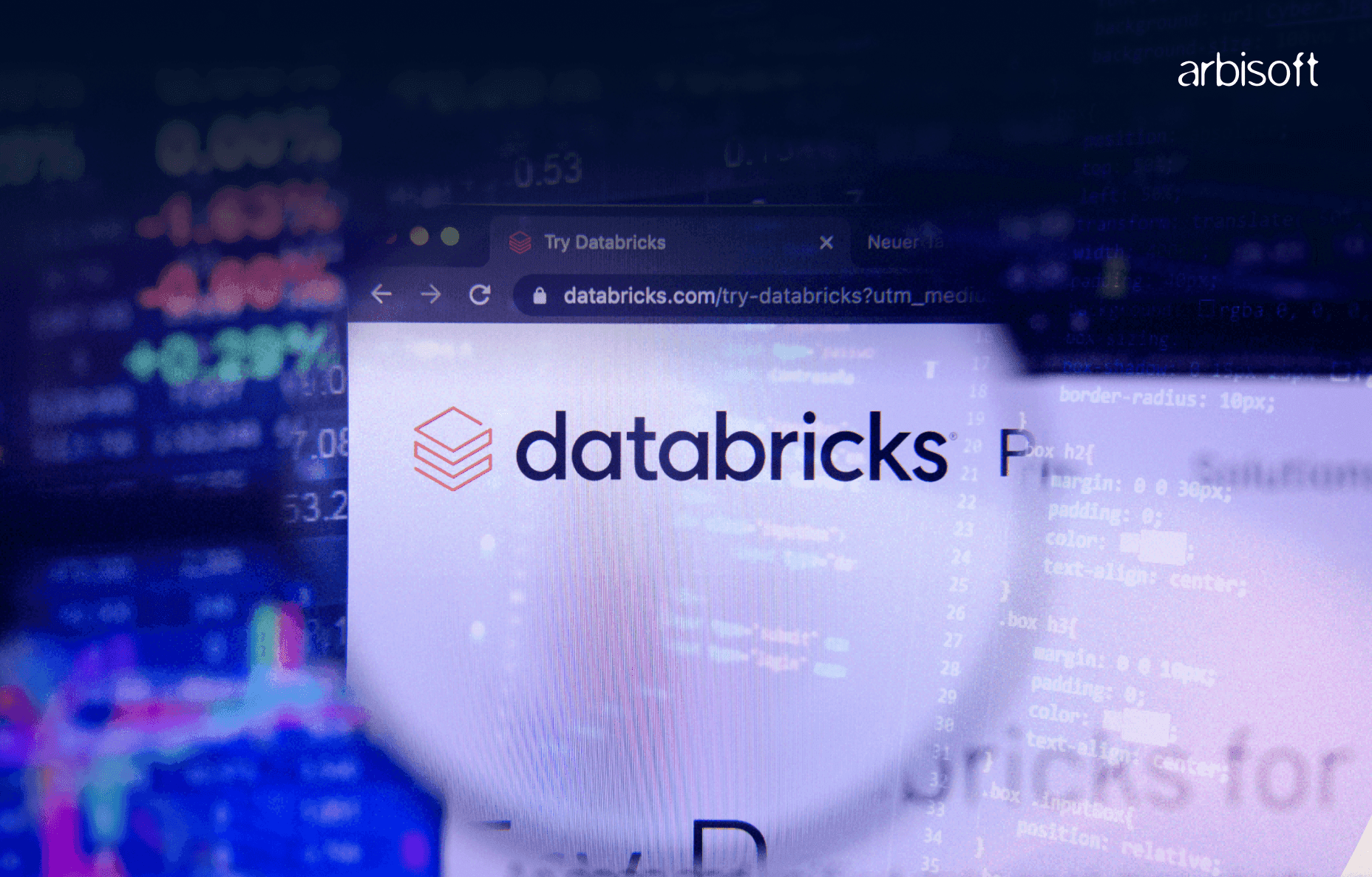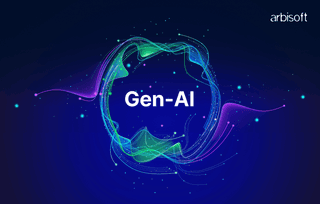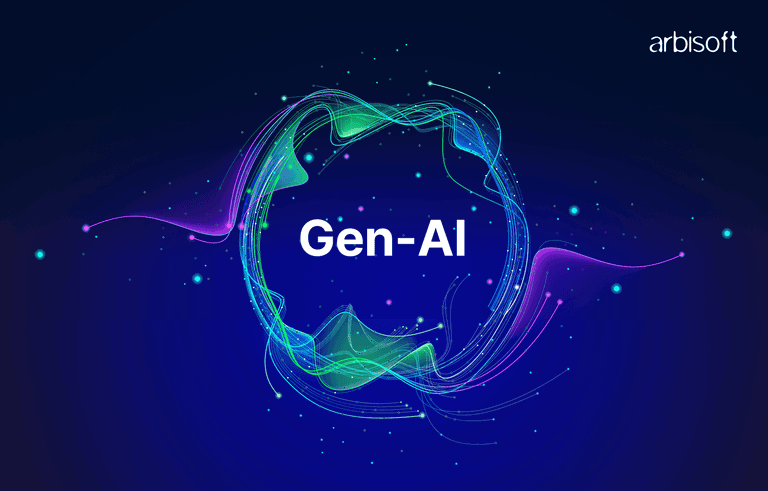We put excellence, value and quality above all - and it shows




A Technology Partnership That Goes Beyond Code

“Arbisoft has been my most trusted technology partner for now over 15 years. Arbisoft has very unique methods of recruiting and training, and the results demonstrate that. They have great teams, great positive attitudes and great communication.”
Using Databricks Auto Loader for Efficient Data Ingestion on the Delta Lake Platform

Let me be real with you. Before I integrated Databricks Auto Loader into my data pipelines, it felt like I was constantly firefighting—managing cron jobs, wrestling with file duplication, and trying to keep ingestion jobs from breaking due to schema issues. It was all reactive and fragile. That changed once I got Auto Loader into the mix.
And I’m not just quoting documentation here. I’m sharing what I’ve actually done. This post isn’t theory—it's a hands-on breakdown of how I used Auto Loader to streamline the ingestion of thousands of files per day into Delta Lake with minimal effort.
What is Databricks Auto Loader?
Databricks Auto Loader is a scalable, incremental ingestion tool that automatically detects and processes new files in cloud storage, making it perfect for real-time and near-real-time pipelines. It uses optimized file listing or notification-based file detection mechanisms to discover new files in a cost-effective and scalable way. Auto Loader supports a wide variety of cloud storage solutions:
- AWS S3
- Azure Blob Storage
- Azure Data Lake Storage Gen2
- Google Cloud Storage
- ADLS Gen1
- Databricks File System

The Auto Loader’s streaming source, called CloudFiles, automatically processes new files as they arrive in your input directory, with the option to process existing files as well. It supports multiple common file formats:
- JSON
- CSV
- XML
- Parquet
- Avro
- ORC
- Text
- BinaryFile

Auto Loader also provides built-in schema inference and automatic schema evolution, helping you avoid pipeline failures when schemas change. It can operate in both micro-batch and continuous streaming modes, making it ideal for data pipelines that need to stay up-to-date with rapidly arriving files and evolving schemas—without the usual complexity or overhead.
Auto Loader doesn’t just ingest files—it writes data directly into Delta Lake tables, which provide ACID transactions, scalable metadata handling, and support for schema enforcement and evolution. This combination makes your data ingestion pipeline not only efficient but also robust and reliable.
What Cloud Platforms Does Auto Loader Support?
Databricks Auto Loader is designed to work seamlessly with major cloud providers’ object storage services. That means:

- Amazon Web Services (AWS): Auto Loader works natively with Amazon S3 buckets, making it easy to ingest files stored there.
- Microsoft Azure: It supports Azure Data Lake Storage Gen2 and Azure Blob Storage.
- Google Cloud Platform (GCP): You can also use Auto Loader with Google Cloud Storage (GCS) buckets.
No matter which cloud you use, Auto Loader leverages the native storage APIs and event notification systems (like S3 event notifications or Azure Event Grid) to detect and process new files efficiently.
How Does Auto Loader Ingest Data from Cloud Storage?
Now, let’s dig into how Auto Loader actually pulls data from your cloud storage into your Delta Lake tables.

- File Detection
Auto Loader keeps an eye on your storage bucket or container. It can detect new files by either:- Polling directory listings (good for smaller data sets or when event notifications aren’t available)
- Listening to cloud file notifications (real-time detection via S3 events, Azure Event Grid, or GCP Pub/Sub)
- Polling directory listings (good for smaller data sets or when event notifications aren’t available)
- Checkpointing
Auto Loader maintains a checkpoint directory in your cloud storage. This keeps track of which files have been ingested, so it never processes the same file twice—cutting down on redundant work and saving compute time.
- Schema Handling
When Auto Loader reads your files, it infers their schema automatically. If your data schema changes over time (say a new column is added), it updates its understanding without crashing your pipeline.
- Incremental Processing
It processes only the new files that arrived since the last ingestion run. This incremental processing means you don’t waste resources reloading all the historical data every time.
- Writing to Delta Lake
Finally, it writes the ingested data directly to Delta Lake tables—Databricks’ own optimized storage format that supports ACID transactions and fast queries.
Using Auto Loader and Delta Live Tables for Incremental Ingestion
To use this setup in a real data pipeline, you can go with Delta Live Tables. For bringing in new data over time (incremental ingestion), Databricks recommends using Auto Loader with Delta Live Tables. This combo improves what Apache Spark Structured Streaming can do and helps you build strong, ready-for-production pipelines with simple Python or SQL code.
What Makes Auto Loader Different:
Auto Loader isn't just another batch processing tool. It's built specifically for incremental file processing using two main approaches:
- Directory listing mode: Good for smaller datasets, it scans directories to detect new files.
- File notification mode: Uses cloud storage events for real-time file detection, reducing unnecessary scans.
The magic happens because Auto Loader maintains its own checkpoint system, remembering exactly which files it's already processed. No more expensive directory scans. No more duplicate processing. This is what makes it highly efficient, especially when working with millions of files or highly nested folder structures.

Why You Should Use It
When you're dealing with data ingestion from multiple upstream systems—each dumping files in different formats, at unpredictable times, and with occasional schema changes—manual file ingestion becomes a serious bottleneck. You end up writing custom Python or Scala scripts to:
- Detect new files,
- Avoid reprocessing duplicates,
- Infer or validate schema changes,
- Log ingestion metadata,
- Ensure exactly-once delivery.
Over time, this fragile setup becomes unmaintainable and riddled with edge cases. It’s not just tech debt—it’s a constant firefighting situation.
Auto Loader changes that equation.

Auto Loader automatically discovers new files, handles schema drift gracefully, tracks what’s been ingested using a robust checkpoint system, and can scale to ingest tens of thousands of files per day without breaking a sweat. Whether you're building one-time ETL jobs or real-time data pipelines, Auto Loader abstracts away the painful parts of ingestion and gives you reliability, speed, and traceability out-of-the-box.
Use Auto Loader When:
- Files arrive at irregular intervals:
Not all systems deliver on a schedule. Some files show up every 30 seconds, others once a day. Auto Loader continuously watches your storage layer and picks up files as they land—no need to poll or guess.
- You’re handling evolving schemas:
Schema changes are inevitable, especially when dealing with JSON or semi-structured data. Auto Loader supports schema evolution, allowing your pipeline to adapt automatically as new fields are added over time.
- You're processing thousands of files per day:
Auto Loader’s file notification mode leverages cloud-native events to avoid costly directory scans, making it ideal for high-volume environments—especially when working with nested folders and millions of historical files.
- You care about traceability:
With built-in support for input_file_name() and structured checkpointing, you can track exactly which file each row of data came from, making audits and debugging significantly easier.
- You want to reduce operational overhead:
Auto Loader removes the need for writing and maintaining ingestion cron jobs, error-handling wrappers, and glue logic between ingestion and storage.
In short, if your ingestion pipeline has any kind of complexity, scale, or unpredictability, Auto Loader is not just useful—it’s essential.
The Key Benefits Of Using The Auto Loader Are:
- No file state management: The source incrementally processes new files as they land on cloud storage. You don't need to manage any state information on what files arrived.
- Scalable: The source will efficiently track the new files arriving by leveraging cloud services and RocksDB without having to list all the files in a directory. This approach is scalable even with millions of files in a directory.
- Easy to use: The source will automatically set up notification and message queue services required for incrementally processing the files. No setup needed on your side

Streaming loads with Auto Loader
You can get started with minimal code changes to your streaming jobs by leveraging Apache Spark's familiar load APIs:

Scheduled batch loads with Auto Loader
If you have data coming only once every few hours, you can still leverage the auto loader in a scheduled job using Structured Streaming's Trigger. Once mode.

Pros and Cons of Using Databricks Auto Loader

✅ Pros | 💬 Details |
| No full folder scans needed | Unlike batch scripts that crawl every folder again and again, Auto Loader remembers what files it already handled. So it skips old ones, and this saves time (and cost) big time. |
| Handles millions of files easily | Most tools freak out if you dump 500k files in a cloud bucket. Auto Loader? Nah. It’s made to scale. File notification mode helps here (we’ll talk more about that). |
| Knows how your data looks (and changes) | Auto Loader can guess the schema (columns/types), and even adjust if the incoming files change structure later. It won’t crash your pipeline because a new field showed up. |
| Gives you 2 ways to detect files | You can choose between: – Directory Listing: check folders manually (slower, but simple) – File Notification: use events from your cloud (faster, more real-time) |
| input_file_name() support | Every row of data knows exactly where it came from. That helps with tracing errors, doing audits, or filtering based on the source. |
| Tight Delta Lake integration | You don’t need extra tools to convert formats. Auto Loader can dump data directly into Delta tables, and it works smoothly. |
⚠️ Cons | 🧠 What that really means |
| Needs a schema location (in prod) | For massive workloads, you should set a path where it saves inferred schema versions. Otherwise, schema handling gets flaky. |
| File notifications need cloud perms | If you wanna use the faster "file notification mode", you gotta configure your cloud (AWS/Azure) to send events. This sometimes means messing with IAM or storage settings. |
| Debugging can be tricky | If you're used to Python/Scala batch scripts, debugging in a streaming-style Auto Loader flow might feel less direct. You gotta dig into logs and UI more. |
Want a quick tip for making the debugging easier?
Add .withColumn("source_file", input_file_name()) right in your ingestion logic. You’ll thank yourself later when you’re digging into weird rows and need to know which file they came from.

Real-World Example: Ingesting Complex, Nested Data with Auto Loader
In one of my previous projects, I had to handle ingestion of system logs coming from hundreds of remote sources. These were some of the challenges and requirements I faced:
- Deeply nested folder structures: The files were stored in multi-level nested folders (imagine four or more layers deep), so I needed a way to scan through all of them without missing anything.
- Inconsistent file naming: The file names weren’t standardized. Sometimes they changed format or naming conventions unexpectedly.
- Schema drift: The file formats could evolve over time—columns added, removed, or renamed—without warning.
- Mission-critical data: These logs fed key business metrics used across multiple teams, so accuracy and timeliness were a must.
- Strict data quality rules:
- No duplicate rows allowed.
- All data had to be ingested within the same day or multiple times a day it was generated.
- Each row had to be traceable back to its original file for auditing purposes.
- No duplicate rows allowed.

How I Solved It Using Auto Loader:
- Recursive path matching:
I used a wildcard pattern like /*/*/*/*/ to make sure Auto Loader scanned every nested folder level, no matter how deep.
- Tracking source files:
To ensure traceability, I added a column using input_file_name(), which tags every row with the exact file it came from. This helped later during audits and debugging.
- Filtering by date:
I applied a filter on the ingestion pipeline so that only files with data from the current date got processed. This made sure we didn’t ingest stale or duplicate data.
- Automatic schema evolution:
Instead of manually updating schemas every time there was a change, I let Auto Loader handle schema evolution automatically. This avoided pipeline failures caused by unexpected columns.
- Delta Lake with optimized checkpointing:
Data was written in Delta format, which provides ACID guarantees and fast queries. I used trigger(once=True) mode to ingest data in micro-batches and saved checkpoints in a dedicated path, so if the job restarted, it knew exactly where to pick up.
This setup saved me a lot of headaches managing complex, irregular data sources, and ensured a reliable, scalable ingestion pipeline that other teams trusted for their reports.

Outcomes I Saw Firsthand


6 Tips I Wish I Knew Sooner
- Always specify the schema to avoid expensive re-inference delays.
- Use trigger(once=True) if you’re running batch-style daily ingestion for better control.
- Filter data early in the pipeline to save cost and speed up processing.
- Log the source filename with input_file_name() from day one—traceability is key!
- Set up reliable checkpoints—they’re a lifesaver when recovering from failures.
- Use Delta Lake for everything—it pairs perfectly with Auto Loader for ACID compliance and fast queries.
Final Thoughts
I didn’t write this to hype a product—I wrote it because Auto Loader solved a real problem for me. I’ve dealt with broken pipelines, late-night alerts, and the chaos of manual deduplication. Auto Loader didn’t fix everything overnight, but it gave me a scalable, reliable foundation to build on.
If you're overwhelmed by unreliable ingestion logic or mountains of raw data, give Auto Loader a serious look. It’s not just a feature—it’s a smarter approach to modern data engineering.
























